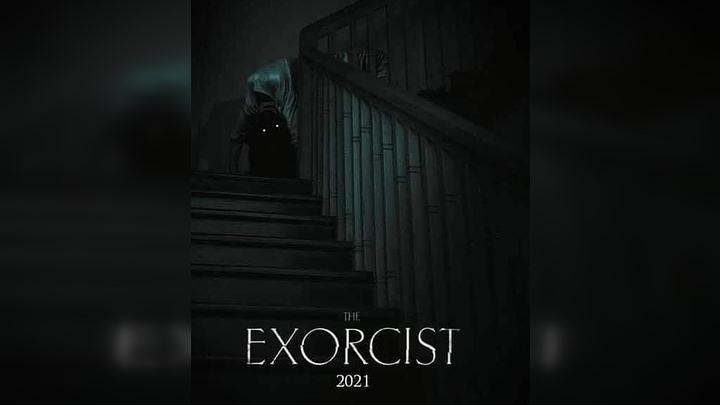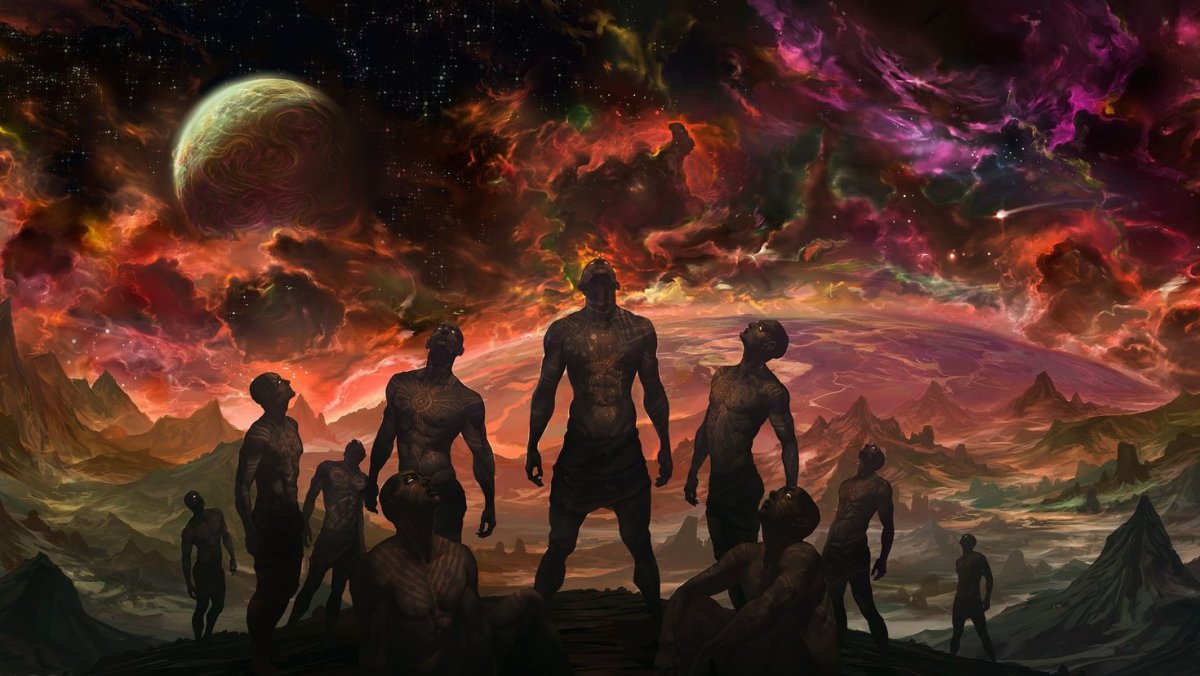There is a specific, visceral sensation that occurs when you stare too long into the blue-lit abyss of a television screen during a prime-time broadcast. It is a subtle prickling at the base of the skull, a primal warning signal that evolution wired into our biology millennia ago but which we have been conditioned to ignore. You look at the perfectly coiffed presenter, the charismatic politician, or the impeccably lit celebrity, and for a split second, the mask slips. You see the smile that doesn’t quite reach the eyes. You hear the cadence of speech that sounds less like human thought and more like a synthetic algorithmic output. You witness an emotional performance of outrage or empathy that feels as hollow as a drum.
In that fleeting moment of clarity, you are not watching a person. You are encountering an entity that our ancestors knew intimately, feared deeply, and warned us about in whispers around peat fires. We have forgotten the old names, trading them for modern titles like “anchor,” “pundit,” or “influencer.” But the phenomenon remains unchanged. We are living in the age of the Changeling.
The ancient Irish and Celtic traditions, rooted in a world where the veil between the tangible and the spiritual was perilously thin, spoke of the Changeling not as a fairy tale, but as a medical and metaphysical diagnosis. It was the terrifying explanation for why a beloved child, a spouse, or a leader would suddenly change, shedding their humanity to become something cold, voracious, and fundamentally other. Today, this folklore has migrated from the cradle to the control room. The entity that once stole children from their beds now sits in the director’s chair of our reality, broadcasting its hollow mimicry of human life to billions of screens. To understand the media landscape of the twenty-first century, we must stop analyzing it as a political or sociological system and start recognizing it for what it truly is: a massive, industrial-scale production of the soulless.
The Archetype of the Stolen Soul
To grasp the horror of the modern media Changeling, one must first understand the anatomy of the original myth. In the agrarian communities of pre-industrial Europe, the Changeling was the result of a theft. The “Good People” or the Sidhe—fickle, amoral spirits from the Otherworld—would slip into a human home under the cover of darkness or magic. They would snatch a human infant, chosen for its vitality, its light, and its potential. In its place, they would leave a substitute.

This substitute, the stock, was often described as a decrepit fairy, a carved log under a glamour spell, or a creature that looked exactly like the child but possessed none of its essence. The tragedy of the Changeling myth is the confusion of the mother. She looks at the creature in the crib. It has her son’s eyes, his hair, his shape. But the light behind the eyes is extinguished. The warmth is gone. The laughter has turned into a cruel, knowing cackle.
The folklore is specific about the characteristics of this impostor entity. They were defined by an eternal, impossible hunger. The Changeling would consume everything the family had—the milk, the grain, the affection—yet remain thin, wretched, and unsatisfied. It was a black hole of need that gave nothing in return. They possessed a cunning intelligence far beyond their apparent years, often speaking with the cynical wisdom of an ancient being, mocking the simple human emotions of their “parents.” And, most critically, they recoiled from the sacred. Iron, prayer, and holy water—symbols of grounding, truth, and divinity—would send them into fits of rage or reveal their true, withered forms.
For centuries, we dismissed these stories as the primitive explanations of uneducated peasants trying to rationalize autism, failure to thrive, or schizophrenia. But folklore is rarely just superstition; it is the psychological record of a civilization. It is a catalog of archetypes. The ancients were describing a spiritual pathology: the existence of a human shell vacated by the human soul, occupied instead by a cold, parasitic intelligence.
They warned us that not everyone who looks human is human. And if you look at the high-definition faces that govern our news cycles and entertainment industries, you will realize that the Sidhe didn’t disappear. They just got better agents.
The Studio as the Modern Fairy Mound
If the Changeling of the past was found in the cradle, the Changeling of the present is manufactured in the studio. The modern television studio is, in many ways, a technological recreation of the Otherworld. It is a space outside of time, bathed in artificial light that mimics no natural sun, where reality is suspended and rewritten. In this space, the human element is systematically stripped away to create a vessel capable of transmitting the signal.
Watch the transformation of a rising media star or a politician. In the beginning, there is often a spark—a genuine ideology, a unique cadence, a flaw that signals humanity. But as they ascend the hierarchy, the “abduction” occurs. The system demands a replacement. The rough edges are sanded down. The voice is trained into a hypnotic, rhythmic non-pattern. The genuine reactions are replaced by micro-expressions tested in focus groups.

By the time they reach the prime-time slot, the original human has effectively been stolen. What remains is the “stock”—a biological puppet animated by the collective will of the corporation, the party, or the algorithm. This is why they all begin to look alike. The “Fox News Blonde,” the “Late Night Host,” the “Concerned Newscaster”—these are not individuals. They are glamour spells cast over empty vessels.
This modern Changeling exhibits the exact same symptoms as the monsters of folklore. Consider the trait of “eternal hunger.” In the myth, the Changeling screamed for food but never grew. In the media, the Changeling screams for attention, for ratings, for validation, and for chaos. There is no amount of money, power, or screen time that can satiate the void inside a career politician or a media mogul. They consume the energy of the populace—our anxiety, our fear, our outrage—and convert it into personal status, yet they remain spiritually emaciated. They are bottomless pits of ego, incapable of the satisfaction that comes from genuine contribution or connection.
The Mimicry of Emotion
The most chilling parallel, however, lies in the simulation of humanity. The folklore warned that the Changeling would try to imitate the child but would always get it slightly wrong. It would laugh when someone was hurt. It would stare blankly when it should be crying. It possessed a “cold cunning” but lacked empathy.
This is the precise definition of the “talking head” phenomenon. We are subjected daily to performances of emotion that are geometrically perfect but spiritually dead. A newscaster pivots from a story about a tragic massacre to a banter-filled segment about the weather in a matter of seconds. Their facial muscles arrange themselves into a mask of “sorrow,” holding the expression for exactly the required duration before snapping back into the neutral, shark-like gaze required for the commercial break.
This is not emotional regulation; it is the absence of the thing being regulated. It is a simulation. These entities have learned the syntax of human feeling without understanding the semantics. They know that a furrowed brow signifies concern. They know that a raised voice signifies righteous anger. They deploy these signals like lines of code.
In the political sphere, this manifests as the uncanny ability to speak for hours without saying anything true. The folklore Changeling possessed a “wicked wit” and could outsmart the parents. Today’s political Changelings possess a weaponized form of intelligence—the ability to navigate complex narratives, gaslight entire populations, and spin disasters into victories, all while maintaining a resting pulse rate. They are unburdened by the conscience that slows down a normal human being. They do not lose sleep over the consequences of their policies because, in a very real sense, the people affected by those policies are a different species to them.

The ancient fear of the “Other” who pretends to be “one of our own” is the root of the uncanny valley effect. We fear robots that look too human because our biology screams that something is wrong. We feel the same way about certain public figures because they are, for all intents and purposes, biological robots. They have occupied the positions of tribal elders and storytellers, but they have no interest in the survival of the tribe.
The Fear of the Sacred
In the legends, the quickest way to expose a Changeling was to confront it with the sacred. The creature would recoil from the touch of iron (the earth’s blood) or the sound of prayer. It could not withstand the vibration of truth.
In our dystopian media landscape, the “sacred” is not necessarily religious doctrine, but the raw, unvarnished truth of the human experience. The modern Changeling has a violent allergic reaction to authenticity. Watch what happens when a scripted narrative is disrupted by a moment of genuine, unscripted reality on live television. Watch the panic in the eyes of the pundit when a guest goes off-script and speaks a forbidden truth. Watch the synchronized hysteria of the media class when a narrative they have constructed is challenged by undeniable facts.
They go into the hysterics described in the fairy tales. They scream, they censor, they cut the feed. They cannot exist in the presence of the real because the real exposes the artifice of their existence. Their entire power structure is built on the maintenance of the glamour—the illusion that they are the arbiters of reality. Authenticity shatters the mirror.
This aversion extends to their relationship with the populace. The Changeling despises the family it has infiltrated. It views them as livestock, as resources to be exploited. Similarly, the media and political elites often display a thinly veiled contempt for the “flyover country,” for the working class, for the very people they claim to represent. They mock their traditions, their faiths, and their concerns. When the cameras are off, or sometimes even when they are on, the mask slips, and the ancient, cold arrogance of the Sidhe stares out. They are not of us. They are merely among us.
The Parasitic Feed
Why has this takeover happened? Why do Changelings now dominate the airwaves? The answer lies in the nature of the system we have built. We have constructed a society that rewards the very traits that define the Changeling: narcissism, superficial charm, lack of empathy, and ruthless ambition.
In a small village, a person without a soul is eventually identified and ostracized. Their coldness betrays them in intimate relationships. But in a mass media society, intimacy is simulated. We do not know these people; we only know their avatars. The screen acts as a shield, hiding the lack of warmth that would be obvious in a handshake.
Furthermore, the corporate and political structures of the modern world are essentially sociopathic engines. They are designed to maximize profit and power at the expense of human well-being. A normal human, burdened with a soul and a conscience, is inefficient in such a system. They hesitate. They feel guilt. They prioritize people over metrics.
The Changeling, however, is the perfect operator for this machine. It does not hesitate. It does not feel. It can fire a thousand people or launch a missile strike and then go to dinner with a clear appetite. The system selects for Changelings. It promotes them. It puts them on the covers of magazines and gives them talk shows. We have built a civilization that acts as a breeding program for these entities, creating a feedback loop where the heartless rise to the top and then reshape the world in their own cold image.
This is why the news feels like a weapon. This is why entertainment feels like programming. The entities running the show are projecting their own internal void onto the world. They are trying to make us like them—scared, hungry, hollow, and disconnected from the sacred. They are terraforming the human soul into a landscape where only a Changeling can survive.
The Return of the Iron

Recognizing the Changeling is the first step to breaking its power. In the folklore, once the mother realized that the thing in the crib was not her child, the spell was broken. She would take action—often drastic action—to force the Otherworld to return what was stolen.
We must reach that same point of realization. We must look at the screens and acknowledge that the people staring back are not “us.” They do not share our interests, our pains, or our joys. Their patriotism is a costume. Their outrage is a script. Their humanity is a special effect.
The ancient remedy was often iron—cold, hard, grounding metal. The modern remedy is the “iron” of critical detachment and the refusal to feed the beast. The Changeling relies on our belief in its deception. It relies on us treating it as a human authority figure. When we withdraw our emotional investment, when we stop feeding their insatiable hunger for attention, they begin to wither.
We must return to the “villages” of our own lives—the real, tangible communities where empathy still exists, where people look each other in the eye, where actions have consequences. We must rebuild the sacred barriers that keep the soulless out. This means turning off the feed. It means rejecting the manufactured crises and the synthetic emotions sold to us by the impostors.
The ancient myths were not just stories; they were survival manuals. They taught us that evil does not always come with horns and fire; sometimes it comes with a beautiful face, a convincing voice, and a story about how much it loves you. It comes as a substitute for the real thing.
The cradles of power are full of impostors. The parliaments, the boardrooms, and the news desks are occupied by entities that eat but are never full, that speak but say nothing. They are the Changelings of the digital age, and they have been running the world while we watched, mesmerized by their performance. But the glamour is fading. The “otherness” is becoming too obvious to ignore. The ancient fear is returning, not as a superstition, but as a necessary immune response of the collective human soul. We are remembering how to spot the fake. And once you see the emptiness behind the eyes of the talking head, you can never unsee it. The TV is just a box of ghosts, and it is time to stop letting them haunt our living rooms.

















